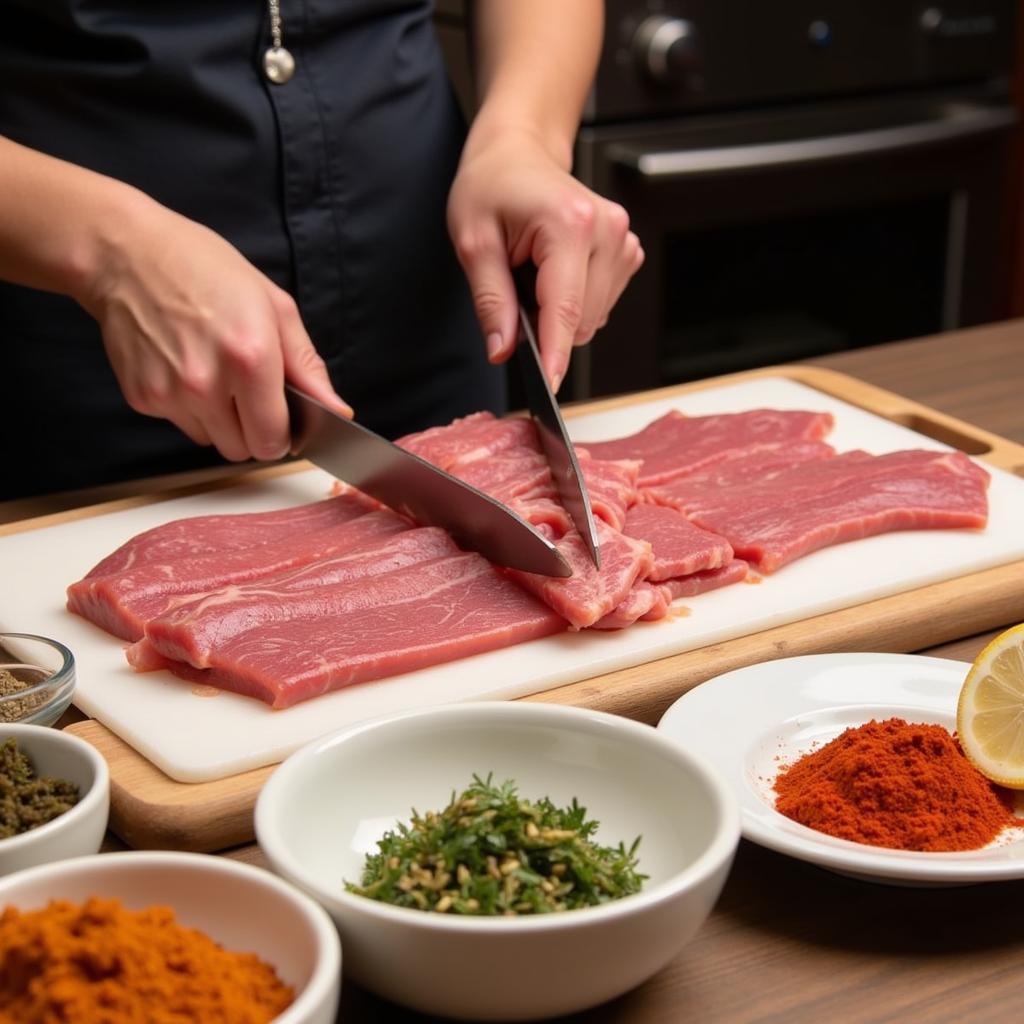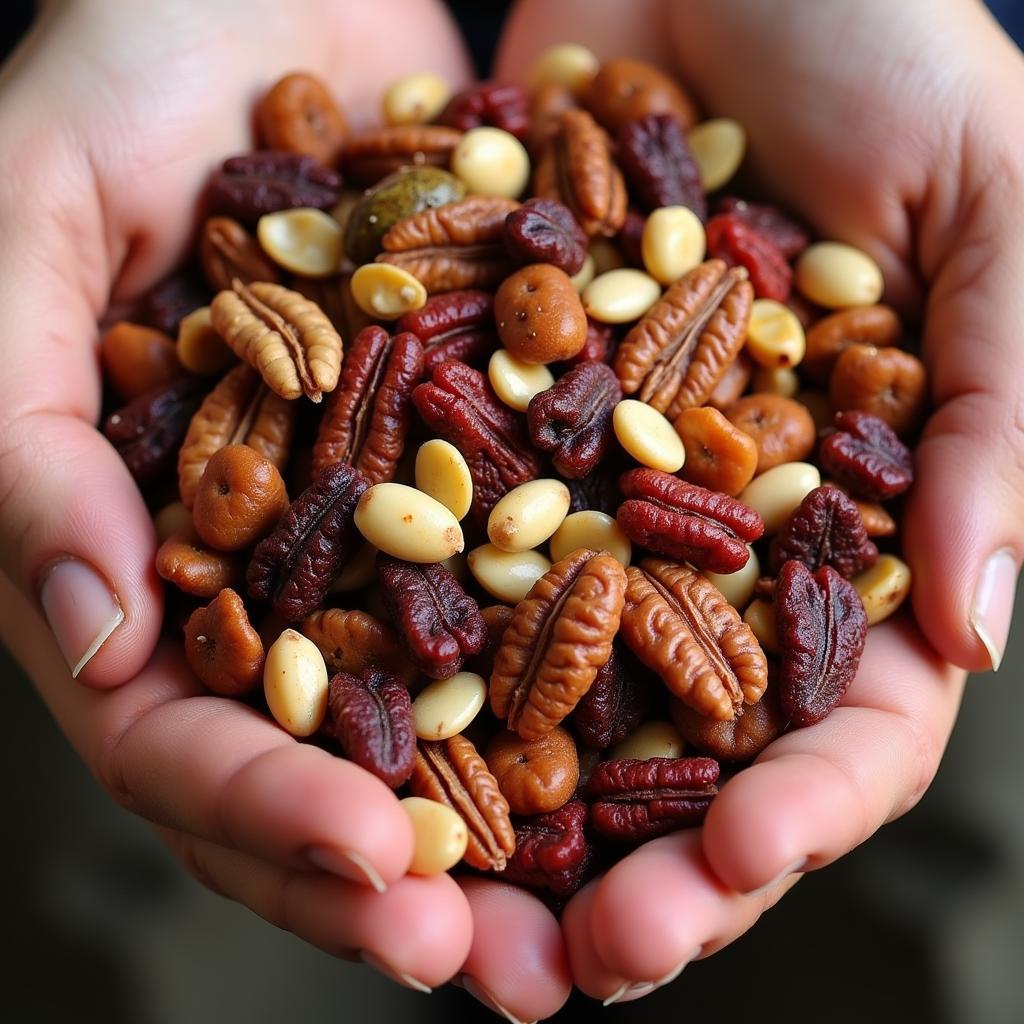Dried meat has been a survival food staple for centuries, and for good reason. It’s lightweight, nutrient-dense, and can last for extended periods without refrigeration, making it a perfect addition to any emergency preparedness kit or backpacking adventure. But not all dried meats are created equal. This guide dives deep into the world of dried meat as a survival food, exploring its benefits, various types, preparation methods, and how to incorporate it into your survival strategy.
Understanding the appeal of Dried Meat Survival Food is crucial in a prepping context. Its longevity and nutritional value make it a practical choice when fresh food is scarce. Check out our prepper supplies food for a broader look at essential survival food options. What sets dried meat apart is its protein content, essential for maintaining energy and muscle mass in demanding situations. Furthermore, its portability makes it ideal for bug-out bags and long-term food storage.
Why Choose Dried Meat for Survival?
Dried meat, often referred to as jerky, offers numerous advantages as a survival food. Its primary benefit is its extended shelf life. By removing the moisture, you significantly inhibit the growth of bacteria and mold, allowing the meat to remain edible for months, even years, when stored properly. This makes dried meat a reliable and safe food source when access to fresh food is limited or nonexistent.
Additionally, dried meat boasts a high protein concentration. This is particularly important in survival situations, where maintaining energy levels and muscle mass is crucial for performing physically demanding tasks. Beyond protein, dried meat also provides essential micronutrients like iron and zinc, contributing to overall health and well-being in challenging environments.
Finally, its lightweight and compact nature makes it easy to transport and store. Whether you’re bugging out or simply stocking your pantry, dried meat takes up minimal space and won’t weigh you down.
 Dried Meat in a Survival Kit
Dried Meat in a Survival Kit
Types of Dried Meat for Survival
Several types of dried meat are suitable for survival purposes. Beef jerky is perhaps the most common, favored for its rich flavor and wide availability. Venison jerky offers a leaner option, while other game meats like elk and bison provide unique flavor profiles and nutritional benefits. Beyond jerky, you can also explore other dried meat options like biltong, a South African specialty, or pemmican, a traditional Native American food combining dried meat with rendered fat and sometimes berries. For those interested in freeze-dried options, check out our essential freeze dried food page.
Preparing Dried Meat at Home
While commercially available dried meat is readily accessible, learning how to make your own offers significant advantages. Not only can you control the ingredients and quality of the meat, but you can also tailor the flavor to your preferences. The process typically involves marinating the meat, then drying it using a dehydrator, oven, or even the sun. Proper storage is crucial to maintain its shelf life. Airtight containers kept in a cool, dark, and dry environment are essential.
 Making Dried Meat at Home
Making Dried Meat at Home
Incorporating Dried Meat into Your Survival Diet
Dried meat isn’t just a standalone snack; it can be incorporated into various meals to enhance flavor and provide essential nutrients. Add it to stews, soups, or even trail mixes for a protein boost. Its versatility makes it a valuable addition to your survival food repertoire. Consider dried food supplies for other valuable additions to your survival plan.
FAQs about Dried Meat Survival Food
What is the shelf life of dried meat? Properly stored, dried meat can last for several months to even a year.
How should I store dried meat for long-term preservation? Store in airtight containers in a cool, dark, and dry place.
Can I make dried meat without a dehydrator? Yes, you can use an oven or even the sun for drying.
Expert Insights
“Dried meat is a powerhouse of nutrition, perfect for survival,” says renowned survival expert, Dr. Sarah Johnson. “Its long shelf life and portability make it an indispensable part of any survivalist’s toolkit.”
“Don’t underestimate the psychological boost of a familiar, flavorful food in a stressful survival scenario,” adds wilderness guide, David Miller. “Dried meat can offer that comfort.”
“Knowing how to prepare your own dried meat is a valuable skill,” notes registered dietitian, Emily Carter. “It empowers you to control the quality and sodium content.”
 Dried Meat Trail Mix
Dried Meat Trail Mix
In conclusion, dried meat survival food offers an excellent source of protein and essential nutrients, contributing significantly to your preparedness plan. Its longevity, portability, and versatility make it a must-have for any prepper or outdoor enthusiast. Don’t forget to check out our article on hunger games themed food for some fun and creative ways to incorporate survival foods into everyday meals. When facing unforeseen circumstances, having a readily available source of sustenance like dried meat can be invaluable.
For any support, please contact us at Phone: 02437655121, Email: minacones@gmail.com or visit us at 3PGH+8R9, ĐT70A, thôn Trung, Bắc Từ Liêm, Hà Nội, Việt Nam. We have a 24/7 customer support team.